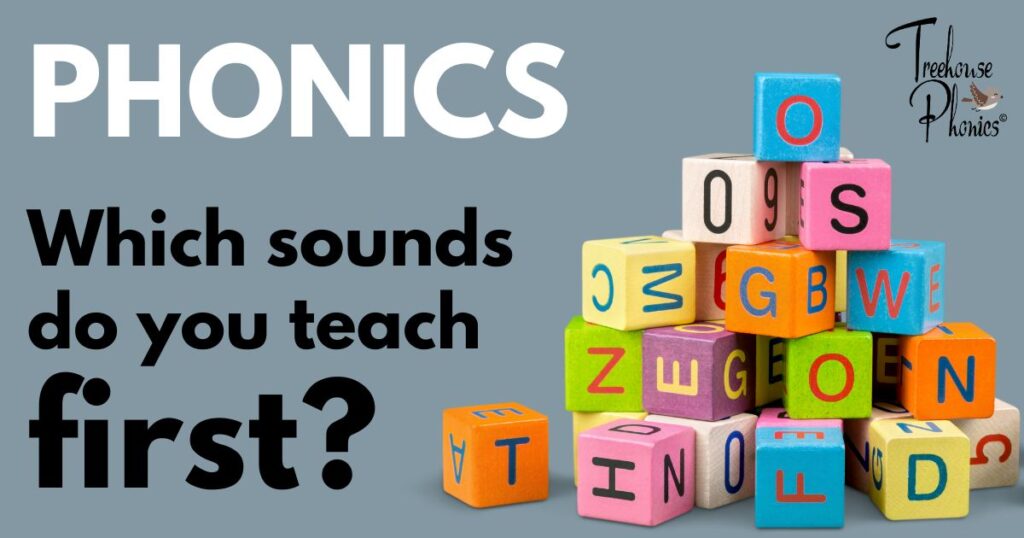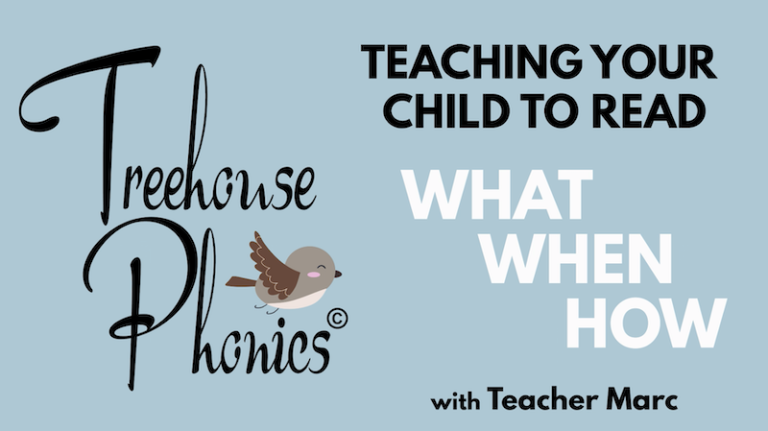There are 44 sounds in the English language. There are 250 ways of representing these sounds using 26 letters either on their own or in groups. So, the obvious question here is which sounds do you teach first?
Letter Recognition
Let’s not confuse letter recognition with phonics. The two are not the same. Yet, learning the names of each letter in our alphabet is an excellent way to start. Most children will learn the ever-popular ABC Alphabet song before their first day of school. The song helps them remember the letter names in alphabetical order. Also, letter recognition gives them an anchor to work from where we can build a form of phonemic and phonological awareness by making slight alterations to the letter names. Let’s examine the vowels first. The letter names for a, e, i, o, and u and their long vowel sounds are the same. This is the first pivot into Phonics and we didn’t need to make any adjustments yet! We’ll address the short vowel sounds later.
Let’s examine the consonants and see where we can make very simple tweaks that leave us with a pure sound we can use to blend one after another to make words. Call out the letter names you see below. Every one of these consonant names starts with the pure sound followed by a long e vowel. Simply remove the long e vowel sound and you are left with only the pure sound (phoneme). Phonemes are the basic building blocks in phonics.
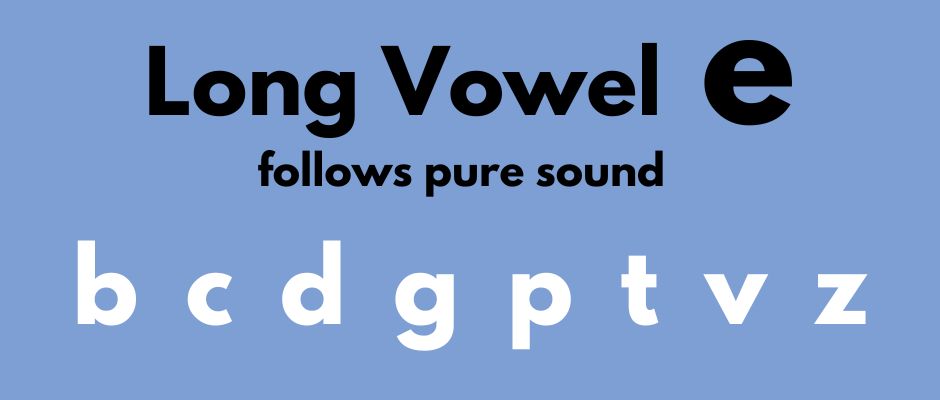
Let’s tweak a few more consonant names. This time we see a group of letters where the short vowel e sound precedes the pure sound. The phoneme is right there and all we have to do is eliminate that initial short vowel e sound.
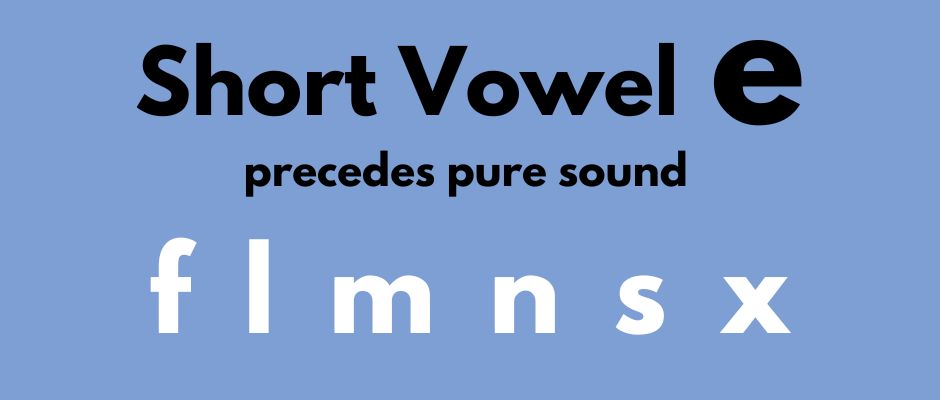
The next two letters start with the pure sound followed by a long vowel a sound. Again, we simply remove the long vowel ending and we are left with the phoneme.
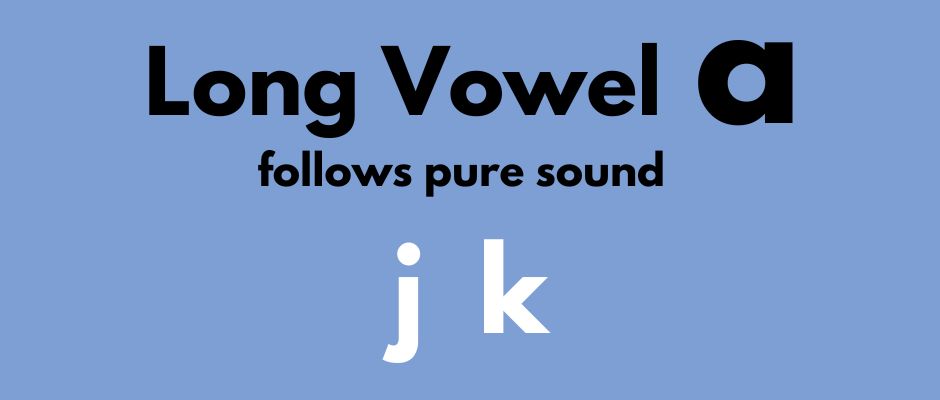
In a perfect world, it would have been nice if we could trim the fat off of every consonant but we are left with the following five troublemakers. For instance, removing the long vowel a sound from the letter h leaves us with a ch (chip) sound. Hardly the “h” phoneme we are looking for as in “hat and hop”. The letter r is a little tricky too. One could remove the short vowel a sound that precedes the letter and in a sense, sound less like a pirate but the ar sound itself is what we call an r-controlled or bossy-r sound, and the influence of r in phonics and spelling tends to complicate matters a little.
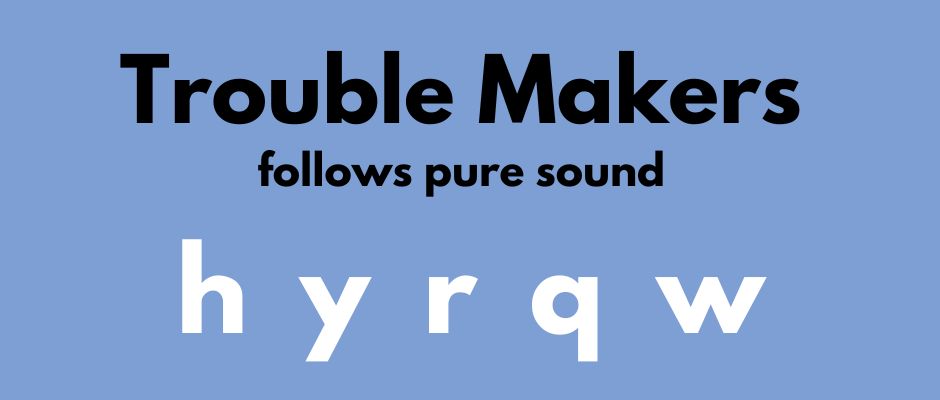
As mentioned earlier, the long vowel sounds a, e, i, o, and u are also their letter names but don’t be fooled by the fact that there are only five (six if you count the letter y acting as a vowel as in “happy” or “bicycle”). The vowels produce almost half of the 44 sounds in English and a, e, i, o, and u also represent short vowel sounds that sound nothing like their long sounds. It’s time to explore which of the 44 sounds we teach first and which letters, or combination of letters, we introduce first and why.
Popularity Contest
Thankfully, a lot of the work has been done for us and through hours and hours of painstaking research, experts have ranked and isolated sounds and listed them from most used and less commonly used. A board game like Scrabble takes full advantage of this concept. Look at the following tiles below.

Notice the Z tile gives you 10 points and the A tile gives you 1 point. This is simply because it’s easy to spell words with the letter A but it’s a whole different story when it comes to the letter Z. One is more popular than the other. When teaching your child to read, we want them to read and spell the most amount of words as quickly as possible and we can achieve this in the first few lessons by working with the most popular letters first. This is why phonics is NOT taught by introducing sounds in alphabetical order. Most programs will introduce letter sounds in groups of six or seven. Group 1 might include the letter sounds s, a, t, p, i, and n. You would be surprised how many words you can sound out and spell with those six letters alone! The aim is to build confidence from day one.
Spelling Formulas
A spelling formula is a simple way of organizing spelling construction by using the letters C for consonants and V for vowels. Two of the simplest words to blend are VC and CVC words. Google “What is a CVC word?” and 9 times out of 10 they start off telling you that it’s a three-letter word. This drives me insane! No wonder why even seasoned, professional educators are confused. Like most formulas we see in math, there are placeholders. The placeholders V and C refer to sounds, not letters. Yes, the word “CAT” is assembled using three letters and follows our CVC spelling formula, a consonant then a vowel then a consonant but when you use the CVC formula to spell the word “PAID”, the vowel sound is represented by two letters (vowel team, digraph) a and i. Do you see why the terms three-letter word and CVC can fool some people? They’re not always three letters long.
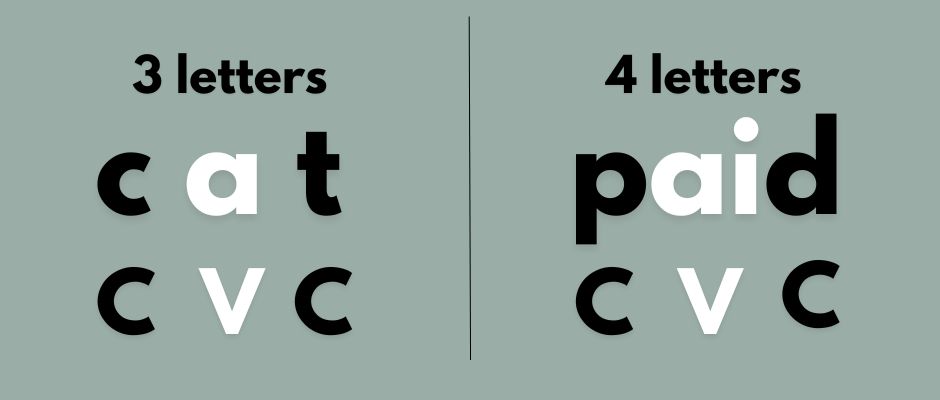
Now that we have a clearer understanding of spelling formulas, let’s discuss their role in dictating what sounds we teach first. As mentioned above, VC and CVC words are one-syllable words and the easiest to blend, so it is entirely possible to get young learners to blend within the first hour. Sounds ambitious? No, I’ve done it time and again and so can you! We start out with sounds we can represent with a single letter. This is why we start with short vowel sounds only! Long vowel sounds always need help to sound out. Notice the following spelling examples for the long vowel a sound.
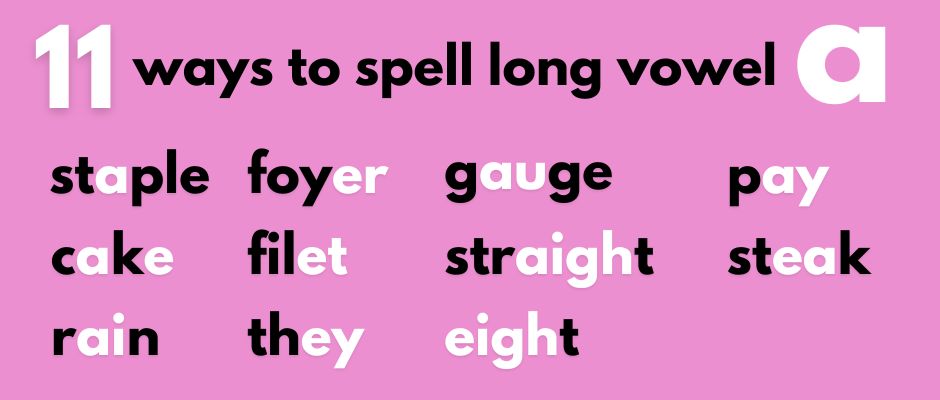
The only word that fits the CVC formula is rain.
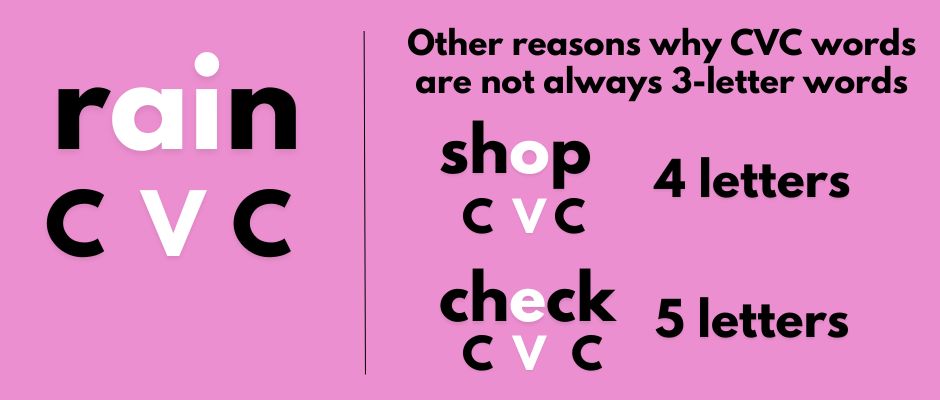
The long vowel a sound needed help. In this case, the sound was represented with the vowel team (digraph) ai. We don’t start with digraphs. It’s way too soon for that. While it is true that short vowel sounds may also be represented by a combination of two or more letters, they can also stand their ground without any assistance in VC and CVC words like at, up, hat, and sit.
VC and CVC spelling are the best places to start blending sounds. By sticking with these formulas first, we no longer have to question whether we teach short vowel or long vowel sounds.
Digraphs (Consonant and Mixed)
A digraph is two letters (graphemes) representing one sound. The k sound at the end of a word is generally represented by the ck consonant digraph except for words of French origin such as “chic”. Other than that, we can maintain our CVC spelling formula with one-syllable words such as tack, pick, and sick. At this point, we will want to have used all the letters of the alphabet and since the letter q can’t do a single thing without the help of the letter u, we begin to blend words like quick, quack, and quit.
Vowel Teams (Vowel Digraphs & Trigraphs)
After completing the first round of short vowel sounds using single letters in VC and CVC words, we must turn our attention to long vowel sounds. Many phonics programs begin to take incredible liberties and assumptions at this point. In a program (which shall remain nameless) that claims you can teach toddlers to read, I found flashcards for words like squirrel and rhinoceros. Simply ridiculous! These programs are in such a hurry to break free from one-syllable words, that a child hardly has the time to master CVC and VC blending. Way too much memory work!
We want to introduce new concepts by building atop previously mastered skills. By sticking with CVC words, we can control the flow of vowel sounds and ease in on some of the peculiar spelling that gives English such a bad rap. Multi-syllable words complicate matters real quick as there are six (some will argue 7) different syllable types that have a direct effect on spelling and how long vowel sounds are put together. If we introduce vowel sounds by continuing to stick with the CVC spelling formula, the choices almost fall into place on their own. Let’s walk through the order of vowels represented as vowel teams (vowel digraphs).
Starting with the long vowel o sound, we can see below that there are three digraphs to choose from. By sticking with CVC, we are left with only one choice.

Here we have two choices for the long vowel a. The obvious choice is the ai digraph.
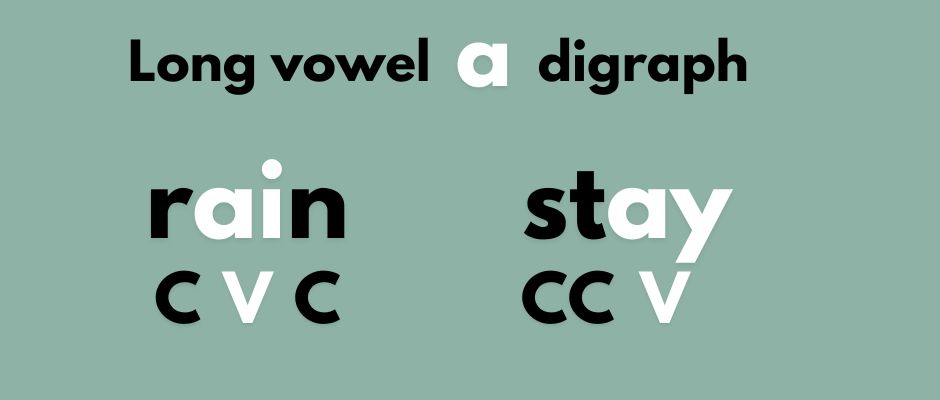
Our CVC formula presents two choices for the long vowel e sound. Which one do we choose? Two factors will tip the scale and favor one over the other. One again, is popularity. The other is simplicity. Words constructed with ee are way more popular than the words spelled using the ie digraph. As for simplicity, you can’t get more basic than doubling the same letter. There is, however, a third factor to consider, and that involves grouping similar combinations.

We have one long vowel sound left. Long vowel sound u. The CVC formula gives us one choice but in doing so we also get a hybrid short vowel u sound in words like book and look. Like the long vowel e sound represented by ee, we are again doubling two letters. Many programs introduce the ee and the two versions of oo at the same time. I have seen the wisdom in doing so time and again.

Our first round of long vowel sounds is complete and we move to a new kind of sound called a diphthong. A diphthong is a sound that begins with one sound and ends with another. The oy in boy starts with a long vowel o sound and ends with a long vowel e. The same can be said of the oi in coin. CVC again, governs which one we teach first. In this case, the oi digraph takes precedence.

Split Digraphs – AKA Magic e
We’ve looked at digraphs where two letters are combined one after the other. A split digraph is where two letters still represent one sound but the combo is split by adding a single consonant between them. Some programs refer to this as Magic E as the second letter in this digraph always contains the letter e. No vowel has a greater influence on spelling than the letter e. The following diagram shows this new way of producing long vowel sounds and the first time we break free from the CVC spelling formula. Keep in mind we are still reading one-syllable words.
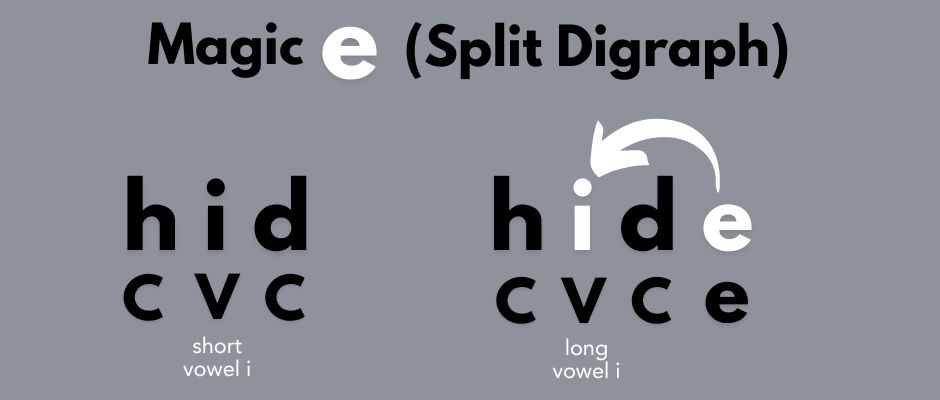
Many programs will introduce split digraphs by simply adding the letter e to words they know and can already blend. Keep in mind that the meaning of the word will be entirely different.
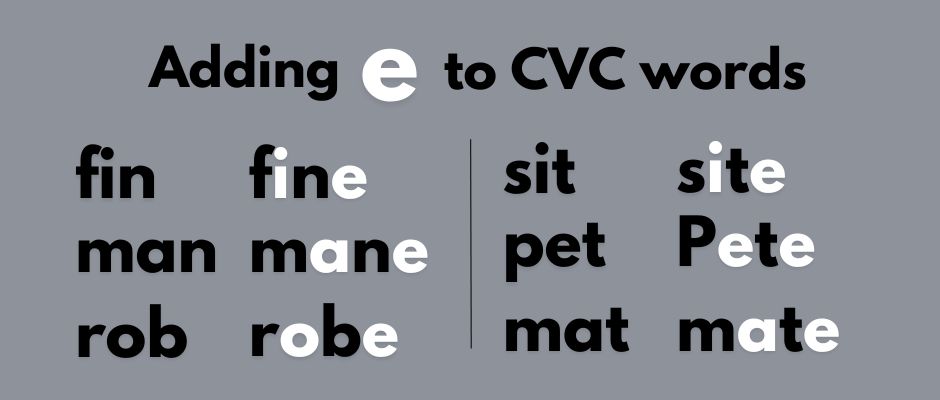
Consonant Blends
This is where a program like Letters and Sounds from the UK got it right. They understood how difficult it is to blend consonants and dedicated an entire phase (level) to it. Initial consonant blends in words like truck, snap, and spin can be really challenging for non-native English speakers. Ending consonant blends can prove just as difficult in words like sink and last and even worse in words sandwiched in by two consonant blends with words like trust and stamp. Take your time with this one. Consonant blends may prove to be a lot more difficult at first and it is important to get them right. Keep an eye out for slurring and the ever-popular sound insertion crutch like adding a to the word snack (sa-nack). My Thai and Japanese students did it all the time as there are no consonant blends in their native language.
R-Controlled (Bossy R) Sounds
The letter r influences letters that immediately precede it. All five vowels will change when followed by the letter r. For instance, say the following words out loud: cat, apple, and hat, and then say car, jar, and far. The r in the last three words changed the a sound did it not? Then we get the ir, er, ur, and or sounds in words like bird, her, blur, and world. R controls the preceding vowels and there is no arguing with Bossy R! It also affects the blend as r-controlled sounds are such a tight unit that a word like bird is treated as a CVC word. So which one do we teach first? Again, it’s CVC single-syllable words to the rescue, starting with ar as in car and far, then moving to ir as in bird and third. We break free from CVC by using consonant blends in words like first and burnt.
Alternate Spellings
Our goal, of course, is to teach all 250 ways of producing the 44 sounds in English. We want our children to understand why words are spelled a particular way and to dispel the myth that the English language is plagued with too many exceptions to even care. Knowing which alternate spellings to introduce first is governed by the complexity and popularity of use. If you’ve come to this point, the foundation you’ve built is rock solid and the greatest takeaway I can leave here is to look for the troublemakers and not to be shy to admit that rules are being broken from time to time.
For instance, vowels in closed syllables like ap-ple are generally short vowel sounds and open syllables produce long sounds as in a-pron and a-corn. Yet we have simple two-letter, open syllable words like to and do where the letter o sounds like the long vowel u and other words like so, no, and go where the letter o sounds like a long vowel o. Jolly Phonics places these words on their “Tricky Words” list. This Tricky Words list is meant to include words that cannot be decoded using phonics as well as high frequency words we see most often in print. The two are not the same and up to 90% of high frequency words CAN be sounded out using the phonics skills your child is mastering each day.
High Frequency Words
Frequency in this context refers to how often a word is seen in print. Articles like a, the, and an are super popular as well as pronouns he, she, it, they, them, and so on. Many have compiled a list of high frequency words and these are a very useful for organizing your reading curriculum. My favorite is the Dolch list of 220 words. Another honorable mention goes to the Fry list of 100 words. Too many reading and phonics programs give into the myth that high frequency words cannot be decoded using phonics. They will also add to the confusion by interchanging the terms high frequency and sight words. Let’s clear this mess right now.
As mentioned above, high frequency words are words most often seen in print. Sight words are words that have been learned and committed to memory so efficiently that they can be read instantaneously. Any word can become a sight word. The more sight words a child can recall, the faster and more fluid their reading becomes. The greatest leverage comes when high frequency words become sight words.
In most schools, children are sent home with a list of 10 to 20 high-frequency words (often completely random) to memorize at face value. Not ideal at all! I take logic and skill over memory every day of the week. Up to 90% of high frequency words can be decoded with phonics. I’ve left the topic of high frequency words until last because any reading program worse their weight in salt will imbed these words into the program in such a way that any word that can be sounded out with phonics is learned as the supporting sounds are introduced. The only thing left to memorize at face value are high frequency words that are way too popular to wait until certain sounds are taught. This very small percentage of words is needed to form even the simplest sentences. So yes, there is some memory work.
Final Thoughts
Hopefully, you get an idea of what is involved in what to teach and when to teach it. Organizing all this information into a flexible and enjoyable reading curriculum can be a daunting task indeed! Thankfully, all of that heavy lifting has been done for you. Knowing how to teach your child to read is easier than you ever imagined. Dare I say FUN too! When everything is completely laid out for you, you feel empowered and excited to teach each and every day. You never question it either because the logic is rock solid and scientifically tested.
How do I teach my child to read? That is a question you will NEVER ask again. Do you want results? Do you want those results faster than you ever thought possible? Treehouse Phonics will take you there. The question you need to ask now is “When do I start?”

